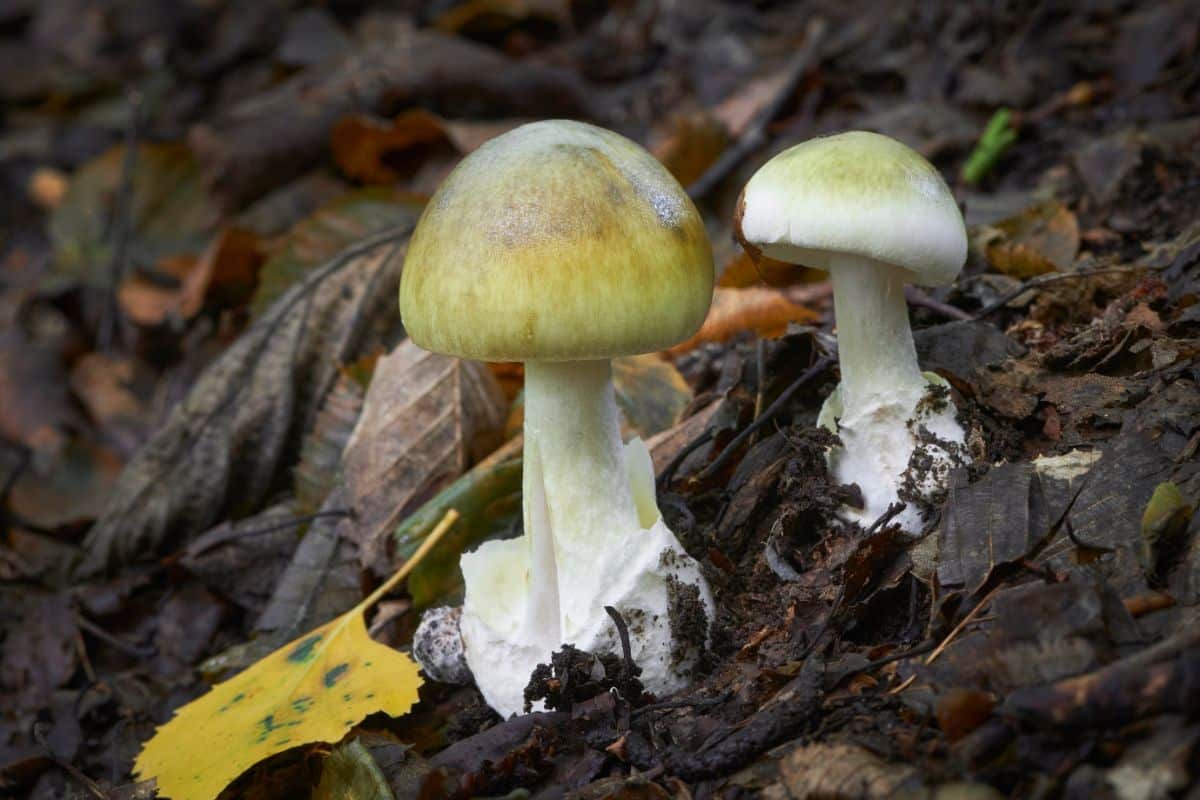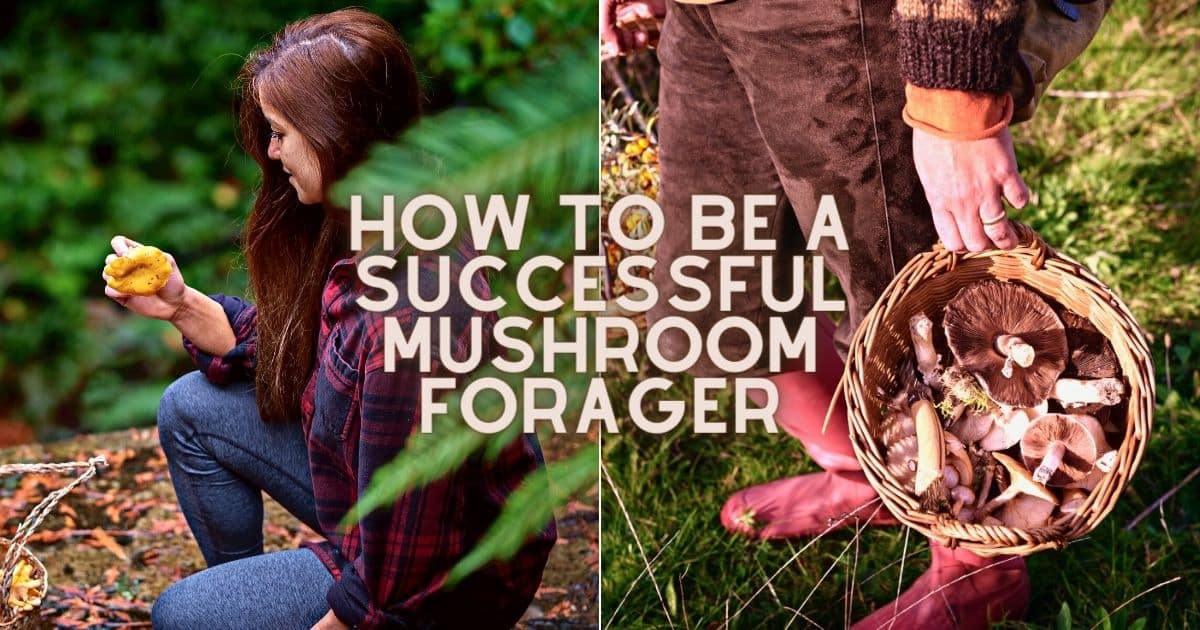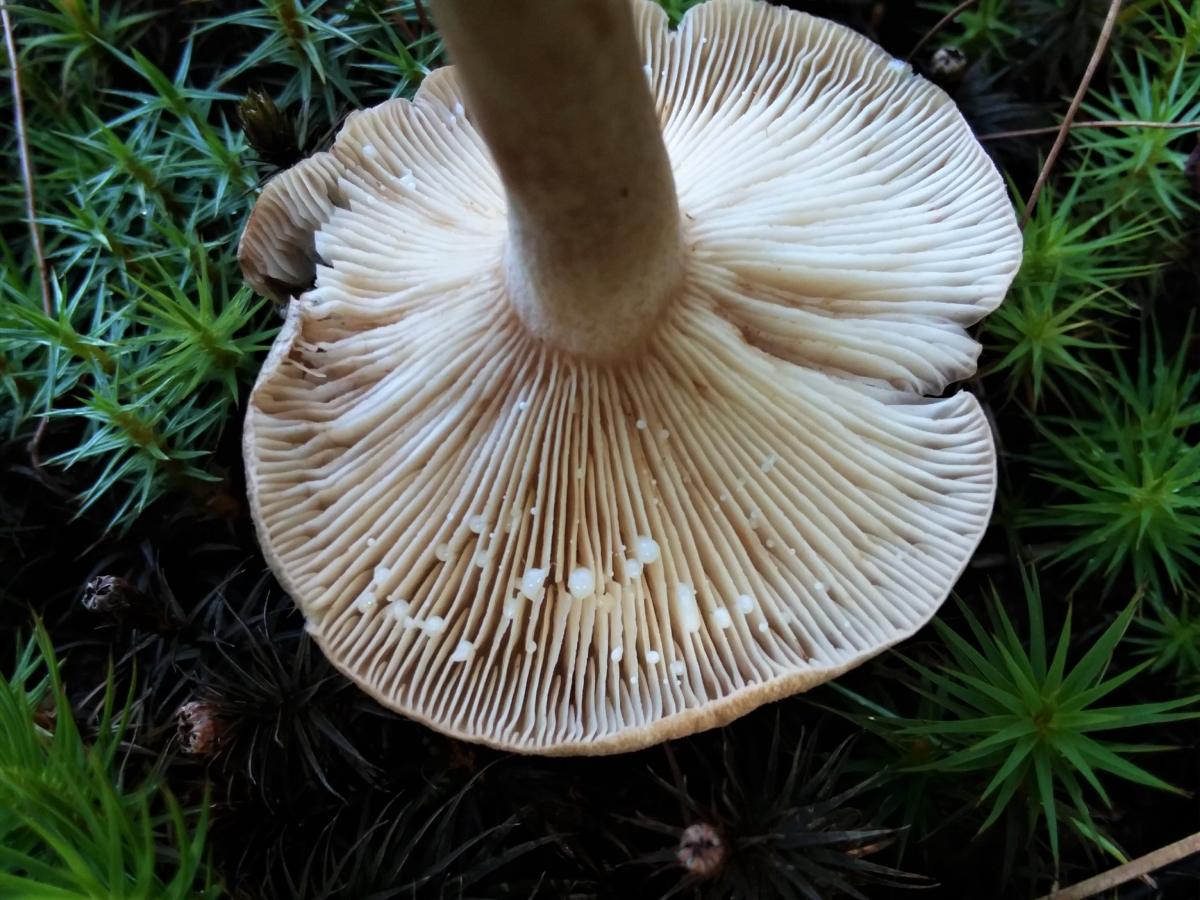Experienced mushroom hunters have long relied on a technique called the nibble and spit test. Though it may initially sound strange or gross (or scary), this method has proven invaluable for identifying mushrooms. Fungi are complex organisms with specific smells and tastes and these are important for determining many species.
In most mushroom identification guides, there is a notation about taste. This is listed as an identification feature along with cap size and color, gill color, stem decoration, overall size, habitat, and smell. It is one of many methods used to figure out a mushroom’s name. Taste should never be relied on as the sole identifying feature, but it is part of the puzzle and is important.

Rest assured – this isn’t a reckless taste-testing adventure. The nibble and spit test follows careful, systematic steps to help identify mushroom families. It should be used along with other identification methods. When done correctly, it’s safer than you might think.
Mushroom identification requires careful attention to detail and multiple verification methods. The nibble and spit test is a valuable tool when used properly alongside visual identification, spore prints, and habitat assessment. Your safety depends on following the correct testing protocol and understanding which mushrooms to avoid altogether.

Jump to:
What Is the Nibble and Spit Test
Seasoned mushroom foragers use the nibble and spit test as a powerful mushroom identification tool. This method involves carefully tasting (but not swallowing) a tiny piece of mushroom to detect specific flavor characteristics. This is also called the “taste and spit” or “chew and spit” test. We prefer nibble because it’s a reminder in the name that this is a very short, quick test. No extended chewing or eating, just a very quick nibble (literally a few seconds), then spit it out.
The nibble and spit test works best after careful visual inspection of your fungi. Looking at similar species like Russula and Lactarius? This method becomes particularly valuable. Remember to use it only when you’re confident about the mushroom family and need that extra verification step.
Safety comes first! Follow these steps before any taste testing:
- Check basic features thoroughly to avoid any potentially deadly species. While it’s generally fine to taste a teensy bit of any mushroom (taste, not swallow or eat!), including very poisonous ones, we like to avoid taking chances. Making sure the mushroom is not a deadly species is a good first step before submitting it to a taste test.
- Choose fresh mushrooms only. Older mushrooms may lose their original taste or turn bitter.
- Keep water ready for rinsing (some people prefer a flask of something else…). This isn’t for getting rid of potential toxins; it’s to get the often unbearably awful taste of some species out of your mouth.
- Never swallow – spit out every sample.
- Be prepared! Some mushrooms are incredibly bitter, others taste like almonds or coconuts, and others are sweet, mild, or bland. The worst ones are the burn-your-tongue spicy specimens. You won’t forget those after a nibble and spit taste test (I’m looking at you, Lactarius piperatus!).
Think of the nibble and spit test as one piece of your identification puzzle. While valuable, it works best alongside other identification methods. And, it is best to be conservative and cautious before using it. If you don’t want to taste a mushroom, don’t. It’s okay. This is not a requirement for identification; it is simply a tool. You may be able to identify the species without a taste test.

A great way to approach this as a new forager is to study the most deadly mushrooms to ensure you don’t accidentally taste-test them. For example, study the dangerous Amanita species. Make sure to understand their different growth stages and appearances. Once you know the genus well enough, you can avoid accidentally taste-testing any of them.
Never rely on taste alone to decide if a mushroom is safe to eat!!!!!! A spicy-tasting mushroom is not automatically poisonous, and a nice-tasting mushroom isn’t always safe to eat.
Some people report that the Death Cap tastes great; rest assured it will try to kill you if you eat it. Lactarius piperatus is exceptionally spicy but also completely edible. Not many people eat it because it is so spicy, but it’s not toxic and, therefore, fine (it actually works nicely as a spice). The nibble and spit test and taste profile, in general, are part of a much larger process. No one identification feature is ever enough to correctly and completely identify a species.

Proper Nibble and Spit Mushroom Testing Technique
Step-by-Step Testing Protocol
- Slice or break off a tiny (tiny!) 1/8 inch piece from the mushroom cap
- Place your sample on the tip of your tongue
- Let it rest there for 5-10 seconds
- Chew gently to release hidden compounds (keep the mushroom piece forward in the mouth, still mainly on the tip of the tongue, while chewing it with the front teeth for a second or two — like a little rabbit “nibbling”)
- Focus on the taste signals
- Spit everything out completely
- Rinse your mouth well with water.
- Repeat the mouth rinse for good measure.
When conducting the test, pay attention to specific flavor profiles. The taste might be peppery, bitter, mild, or somewhat metallic. Some mushrooms produce a delayed reaction, so wait at least 30 seconds after spitting to assess the full taste experience.
Common Taste Reactions
Each mushroom tells its own flavor story. You might discover:
- A burning or peppery sensation (common in certain Russula species)
- Bitter taste that intensifies over time
- Metallic or acrid flavors
- Mild, pleasant, or neutral tastes

Integrating Taste with Other ID Methods
Successful mushroom identification requires a comprehensive approach. The nibble and spit test serves as just one piece of the puzzle. Think of it as a detective gathering multiple pieces of evidence – each method provides valuable clues.
Before considering any taste test, you should always start with these fundamental identification methods:
- Study the cap, gills, and stem features closely
- Create and analyze spore prints
- Notice where and when the mushroom grows
- Check trusted field guides
- Take detailed photos
The key to effective mushroom identification is using these methods in a systematic order. Look at the whole mushroom first, study its habitat, and rule out dangerous species. Only then should you consider the nibble and spit test.
Remember to document your findings at each step. Take clear photographs from multiple angles, noting the mushroom’s size, color, and unique features. When you perform the taste test, record your observations immediately and compare them with your visual findings.

Identifying Specific Mushrooms with The Nibble and Spit Test
The taste test becomes particularly valuable when identifying specific mushroom families. Each genus has unique characteristics that make the nibble and spit test an effective identification tool.
Russula Species
These colorful fungi range from gentle, mild flavors to intensely peppery kicks. The taste reaction is usually immediate – mild species remain neutral, while others might produce a sharp, peppery burn.
The nibble and spit taste test is especially useful with Russula identification. There are hundreds of species in this genus, and many of them look extremely similar. Sometimes, the primary difference between lookalikes is their taste.

Lactarius Species
When cut, these unique mushrooms ooze milky latex, which sets them apart from other species. But, while it’s usually pretty easy to determine you’ve found a milky cap (Lactarius) mushroom, it’s much harder to figure out which one it is. There are hundreds of milky caps in North America alone.
Their taste test requires extra attention because they love to play tricks. Take note of both the initial taste and any delayed reactions. Some species start mild but develop a slow-burning acrid taste, while others remain consistently bitter or peppery.

Bolete Species
The Boletales order presents unique challenges in taste testing. These mushrooms often have subtle flavor variations that help distinguish between similar-looking species. There are no deadly bolete species, so doing the nibble and spit taste on these is usually fine. There are a lot of bitter ones out there though, so it’s not always fun. Key taste characteristics include:
- Mild to slightly nutty
- Bitter or acidic
- Metallic or chemical-like
- Sour or astringent
Remember to wait at least 30 seconds after spitting since some flavors may not be immediately apparent. Some mushrooms have a delayed reaction.

Common Mistakes and Safety Precautions
Safety should always be your top priority when conducting any mushroom identification tests. Even experienced foragers can make mistakes. Understanding potential pitfalls is crucial for safe foraging.
Dangerous Species to Avoid
Before conducting any taste test, be especially cautious of these dangerous species:
- Death Cap mushrooms (Amanita phalloides)
- Destroying Angels (Amanita bisporigera)
- False Morels (Gyromitra species)
- Little Brown Mushrooms (LBMs)

Emergency Protocols
Quick action matters! Follow these steps if something feels wrong:
- Rinse your mouth right away with water
- Call poison control now (1-800-222-1222)
- Snap clear photos of the mushroom
- Save a sample for testing
- Head to medical help if you notice any symptoms
When Not to do the Nibble and Spit Taste Test
Never conduct taste testing in these situations:
Your judgment is impaired, or you’re distracted. Testing requires full concentration and careful observation. Always avoid testing if the mushroom shows signs of decay or if you haven’t completed basic visual identification first.
Common Questions About Nibble and Spit Mushroom Taste Testing
Is the nibble and spit test safe for all mushrooms?
Yes, but with extreme caution. It should only be done after careful visual identification and when you’re reasonably confident the mushroom isn’t from a deadly toxic group. Never test completely unknown or potentially dangerous species. The important part is to never actually swallow the mushroom – always spit out the tiny piece tested. Overall, most experienced mushroom foragers and mycologists avoid taste testing dangerous species because they know how to identify them without the taste test. This eliminates any potential toxicity issues.
What taste characteristics should I look for during the taste test?
Pay attention to specific flavor profiles such as peppery, bitter, mild, or metallic tastes. Some mushrooms may produce delayed reactions, so wait at least 30 seconds after spitting to assess the full taste experience.
Can the nibble and spit test be used as the sole method for mushroom identification?
No. Never! The nibble and spit test should never be used as a standalone technique. It’s just one tool in the identification process and should always be used with other methods like visual examination, spore prints, and habitat assessment.










Leave a Reply